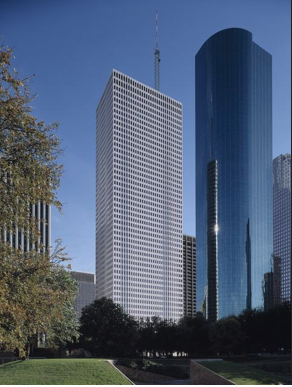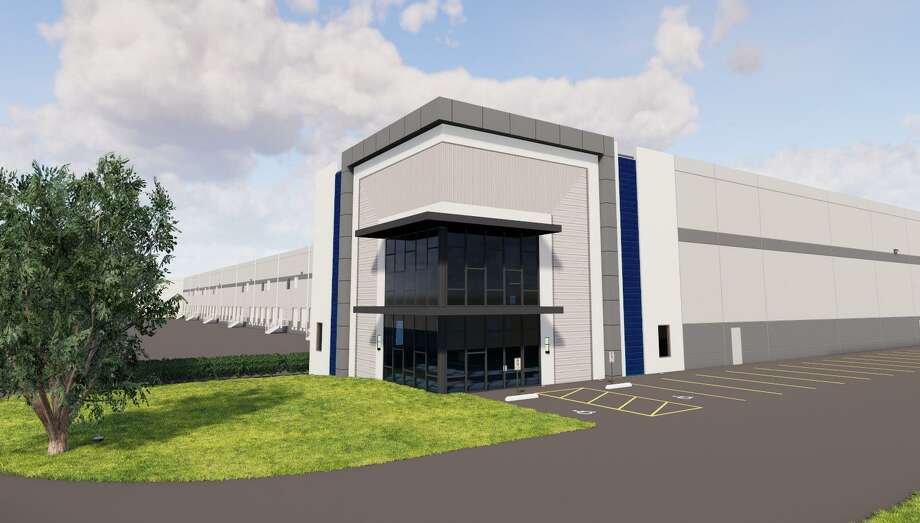What should the expectation be for capitalization (cap) rates and commercial real estate asset pricing as the Fed continues to cut interest rates? The short answer is, all else equal, a reduction in interest rates should result in a compression of cap rates, thereby increasing commercial real estate prices. This is because lower interest rates result in higher net cash flows available to the investor after accounting for debt service.
This may be thought of as the spread between the cap rate and the interest rate. As interest rates fall, an investor who was willing to accept a 300-basis point spread between a 5% borrowing rate and 8% cap rate would theoretically accept the same 300-basis point spread on a 7% cap rate if their borrowing rate fell to 4%.
Keep in mind, cap rates and interest rates are not 100% correlated. However, buyer beware, interest rates are not the only variable affecting cap rates and the underlying asset pricing.
In addition to an individual investor’s own return requirements, which will vary based on their risk appetite, there are many other data points to analyze in a commercial real estate investment.
Other variables that should be considered are business terms of the lease, the makeup of the asset and the health of the overall market. The business terms of the lease include the duration of the lease, what is the base rental rate and how does it compare to market rents; who is responsible for various maintenance-related items of the leased asset and how creditworthy is the tenant.
The general makeup of the asset would include variables such as location, age, condition, and competition. Any of these variables that reduce the risk of the investment should also reduce the cap rate an investor is willing to pay and those that increase the risk should increase the cap rate.
Longer-term leases, well-located properties, newer assets, below-market rental rates, and better credit tenants would all represent less risk when compared to the median. On the contrary, short term, poorly located, obsolete or older assets, above market rents and low-credit or no-credit tenants would all represent variables having a higher degree of risk and thereby resulting in a higher cap rate expectation.
All of these variables contribute to the overall risk of any given investment opportunity and for each one that reduces one area of risk there may be another that increases a different area of risk, but all should be considered together.
As we move through the third quarter, with expectations growing for another rate cut in September, it will be interesting to see how much further cap rates may compress and if commercial real estate asset prices increase, understanding that interest rates are only one of the variables that determine asset pricing.






 When the opportunity zone program was announced in late 2017, Dosch Marshall Real Estate Vice President Tripp Rich received a lot of calls about the program, including from firms he was not familiar with. The initial prospect of the tax exemption was so attractive and unheard of that everyone wanted in. Houston showed particular promise: The MSA has the highest concentration of assets in opportunity zones — 21.7% compared to the national average at 12.6%, according to the commercial real estate data platform Reonomy. “Houston should attract more opportunity zone projects than any other city,” Reonomy Vice President of Marketing Sam Viskovich said. But investment interest in the program has dwindled, and Rich said the number of firms talking to him about participating has dropped. Bisnow Archives/Kyle Hagerty Houston skyline Qualified opportunity funds have raised less than 10 cents on the dollar of the program’s targeted goal in 2019, according to CoStar. In Houston, the percentage of total commercial investment within opportunity zones has dropped from 38.5% in 2017, which is the highest in a nearly 20-year span, to 16.4% for the first quarter of 2019, according to a report by Reonomy. There are at least three possible reasons for the slowdown, Viskovich said. It could be related to the number of sites in high-targeted areas. Since the program used 2010 census data and input from local leaders, some zones were already experiencing an influx of capital. He also noted the maturing cycle could have some investors tightening the purse strings and focusing on the tried-and-true deals. But some of the drops may just be that deals haven’t happened yet, not that they won’t happen at all. The initial obscurity of the program caused some to take a wait-and-see approach. Viskovich expects those who are satisfied with the new guidance (released by the IRS in April) will move forward with their projects. Courtesy of Reonomy Reonomy Vice President of Marketing Sam Viskovich The pace of investment activity for the rest of the year will be a good indicator of the future traction of the opportunity zone program, Viskovich said. Rich expects a big rush to close on sites closer to 2020. Opportunity zone projects follow the traditional development timeline and process — the deals take time. It could take up to 12 months after the site is under contract to break ground. And until dirt turns, developers are keeping quiet about their plans. “No one wants to talk about a project until they know it is about to happen,” he said. The rise in pricing in opportunity zones is one reason to stay optimistic about the program’s future in Houston. Since the announcement of the OZ program, the average sales price for properties in Houston opportunities zones has increased significantly compared to properties, not in opportunity zones, which have remained steady. Multifamily development has been the go-to property type for opportunity zone investment in Houston, said JLL Senior Vice President Jonathan Paine, whose team arranged construction financing and equity for Hines’ The Preston, a 373-unit luxury apartment project funded by Cresset-Diversified QOZ Fund in Downtown Houston. He is engaged with more than 10 opportunity zone projects across the country, made up mostly of multifamily developments. A local developer is planning two apartment complexes in the Inner Loop, Rich said. A national QOZ fund plans to spend upwards of $350M in Texas, Arizona, Colorado, Kansas, New Mexico, Oklahoma, and Utah, according to Rich. The fund is targeting mostly multifamily development, while office and mixed-use projects are also being considered. Courtesy of Dosch Marshall Real Estate Dosch Marshall Real Estate Vice President Tripp Rich Developers are opting for apartments and hotels because they can be built quicker; the quality can be sustained over a long period; there is no pre-leasing required for financing; and, unlike office development, they are not dependent on long-term leases, Paine said. He expects retail development to come in the next phase of investment as zones become more densified. Industrial development is also feasible; he is in talks with a fund to develop an industrial building in an opportunity zone out of state. More than a fourth of the properties in Houston’s opportunity zones are categorized as commercial general and about 25% is multifamily, according to Reonomy. Retail and industrial come in as third and fourth in the share of assets in opportunity zones. Zones in Houston’s Inner Loop, which includes already-revitalizing areas such as downtown, are expected to benefit the most under the opportunity zone program, Rich said. That is partial because all opportunity zone projects must pencil out. While the federal program was designed to stimulate commercial expansion in economically distressed areas by providing a tax benefit in exchange for a long-term investment, being in an opportunity alone doesn’t make a project a safe bet. Bisnow/Catie Dixon Hanover Co.’s Brandt Bowden, JLL’s Jonathan Paine and Weingarten CEO Drew Alexander at Bisnow Houston’s capital markets event February 2016 Investors and developers have become more mindful when selecting partners, as funds must hold properties at least 10 years to maximize the tax benefits of the program, Paine said. These projects will require a long-term commitment from both sides. Developers want to pick the fund early in the development process before designing and permitting the project, which helps to share the cost and provide input on the scope and viability of the project, Paine said. For example, one opportunity zone partnership in Las Vegas is considering how the next owner will perceive the quality of the product, Paine said. They opted for higher-quality materials and exterior cladding that will provide durability and functionality in the long run. While the upgrades ultimately add 10% to 15% more to the budget, the idea is that the property will retain its value. “They were in agreement that was the best thing for a project that they were going to own for 10 years,” he said. While the number of investors eyeing Houston opportunity zone deals has shrunk, that isn’t necessarily concerning. Since the Treasury Department released the second round of guidance in April, sophisticated funds are moving forward with development plans while the delays and intricacies of the process have weeded out less experienced real estate investors. The QOFs interested in building in Houston come from the same group of investors that have considered Houston in prior investment periods, Paine said. The most active groups are ready to deploy capital with the staff and the knowledge to meet and maintain the regulations set by the federal government.
When the opportunity zone program was announced in late 2017, Dosch Marshall Real Estate Vice President Tripp Rich received a lot of calls about the program, including from firms he was not familiar with. The initial prospect of the tax exemption was so attractive and unheard of that everyone wanted in. Houston showed particular promise: The MSA has the highest concentration of assets in opportunity zones — 21.7% compared to the national average at 12.6%, according to the commercial real estate data platform Reonomy. “Houston should attract more opportunity zone projects than any other city,” Reonomy Vice President of Marketing Sam Viskovich said. But investment interest in the program has dwindled, and Rich said the number of firms talking to him about participating has dropped. Bisnow Archives/Kyle Hagerty Houston skyline Qualified opportunity funds have raised less than 10 cents on the dollar of the program’s targeted goal in 2019, according to CoStar. In Houston, the percentage of total commercial investment within opportunity zones has dropped from 38.5% in 2017, which is the highest in a nearly 20-year span, to 16.4% for the first quarter of 2019, according to a report by Reonomy. There are at least three possible reasons for the slowdown, Viskovich said. It could be related to the number of sites in high-targeted areas. Since the program used 2010 census data and input from local leaders, some zones were already experiencing an influx of capital. He also noted the maturing cycle could have some investors tightening the purse strings and focusing on the tried-and-true deals. But some of the drops may just be that deals haven’t happened yet, not that they won’t happen at all. The initial obscurity of the program caused some to take a wait-and-see approach. Viskovich expects those who are satisfied with the new guidance (released by the IRS in April) will move forward with their projects. Courtesy of Reonomy Reonomy Vice President of Marketing Sam Viskovich The pace of investment activity for the rest of the year will be a good indicator of the future traction of the opportunity zone program, Viskovich said. Rich expects a big rush to close on sites closer to 2020. Opportunity zone projects follow the traditional development timeline and process — the deals take time. It could take up to 12 months after the site is under contract to break ground. And until dirt turns, developers are keeping quiet about their plans. “No one wants to talk about a project until they know it is about to happen,” he said. The rise in pricing in opportunity zones is one reason to stay optimistic about the program’s future in Houston. Since the announcement of the OZ program, the average sales price for properties in Houston opportunities zones has increased significantly compared to properties, not in opportunity zones, which have remained steady. Multifamily development has been the go-to property type for opportunity zone investment in Houston, said JLL Senior Vice President Jonathan Paine, whose team arranged construction financing and equity for Hines’ The Preston, a 373-unit luxury apartment project funded by Cresset-Diversified QOZ Fund in Downtown Houston. He is engaged with more than 10 opportunity zone projects across the country, made up mostly of multifamily developments. A local developer is planning two apartment complexes in the Inner Loop, Rich said. A national QOZ fund plans to spend upwards of $350M in Texas, Arizona, Colorado, Kansas, New Mexico, Oklahoma, and Utah, according to Rich. The fund is targeting mostly multifamily development, while office and mixed-use projects are also being considered. Courtesy of Dosch Marshall Real Estate Dosch Marshall Real Estate Vice President Tripp Rich Developers are opting for apartments and hotels because they can be built quicker; the quality can be sustained over a long period; there is no pre-leasing required for financing; and, unlike office development, they are not dependent on long-term leases, Paine said. He expects retail development to come in the next phase of investment as zones become more densified. Industrial development is also feasible; he is in talks with a fund to develop an industrial building in an opportunity zone out of state. More than a fourth of the properties in Houston’s opportunity zones are categorized as commercial general and about 25% is multifamily, according to Reonomy. Retail and industrial come in as third and fourth in the share of assets in opportunity zones. Zones in Houston’s Inner Loop, which includes already-revitalizing areas such as downtown, are expected to benefit the most under the opportunity zone program, Rich said. That is partial because all opportunity zone projects must pencil out. While the federal program was designed to stimulate commercial expansion in economically distressed areas by providing a tax benefit in exchange for a long-term investment, being in an opportunity alone doesn’t make a project a safe bet. Bisnow/Catie Dixon Hanover Co.’s Brandt Bowden, JLL’s Jonathan Paine and Weingarten CEO Drew Alexander at Bisnow Houston’s capital markets event February 2016 Investors and developers have become more mindful when selecting partners, as funds must hold properties at least 10 years to maximize the tax benefits of the program, Paine said. These projects will require a long-term commitment from both sides. Developers want to pick the fund early in the development process before designing and permitting the project, which helps to share the cost and provide input on the scope and viability of the project, Paine said. For example, one opportunity zone partnership in Las Vegas is considering how the next owner will perceive the quality of the product, Paine said. They opted for higher-quality materials and exterior cladding that will provide durability and functionality in the long run. While the upgrades ultimately add 10% to 15% more to the budget, the idea is that the property will retain its value. “They were in agreement that was the best thing for a project that they were going to own for 10 years,” he said. While the number of investors eyeing Houston opportunity zone deals has shrunk, that isn’t necessarily concerning. Since the Treasury Department released the second round of guidance in April, sophisticated funds are moving forward with development plans while the delays and intricacies of the process have weeded out less experienced real estate investors. The QOFs interested in building in Houston come from the same group of investors that have considered Houston in prior investment periods, Paine said. The most active groups are ready to deploy capital with the staff and the knowledge to meet and maintain the regulations set by the federal government.
